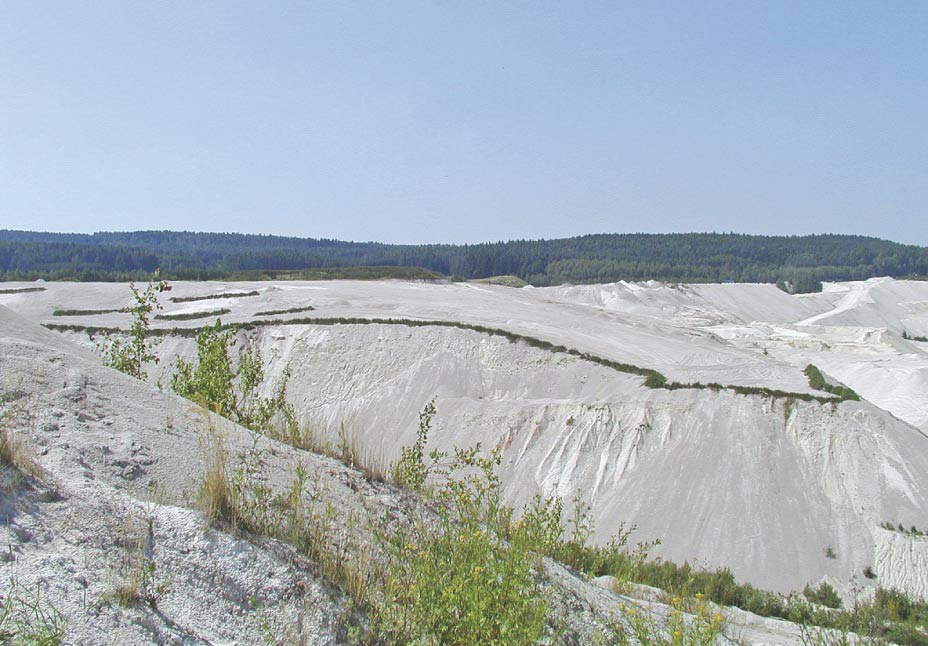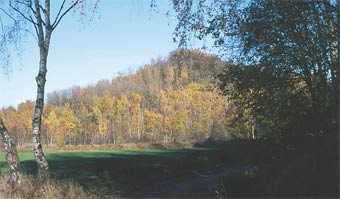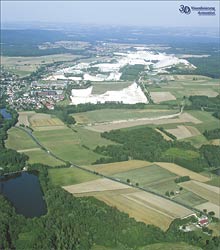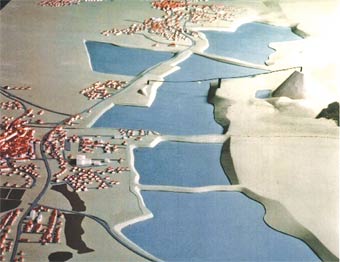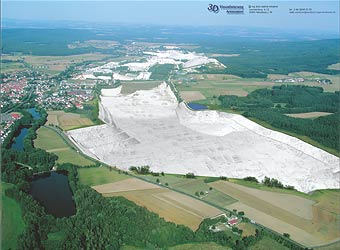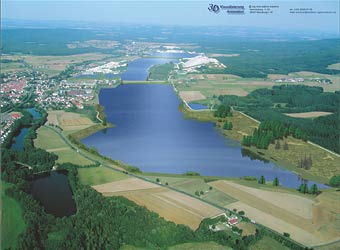<< Station 7 | Back to industrial trail | Station 9 >>
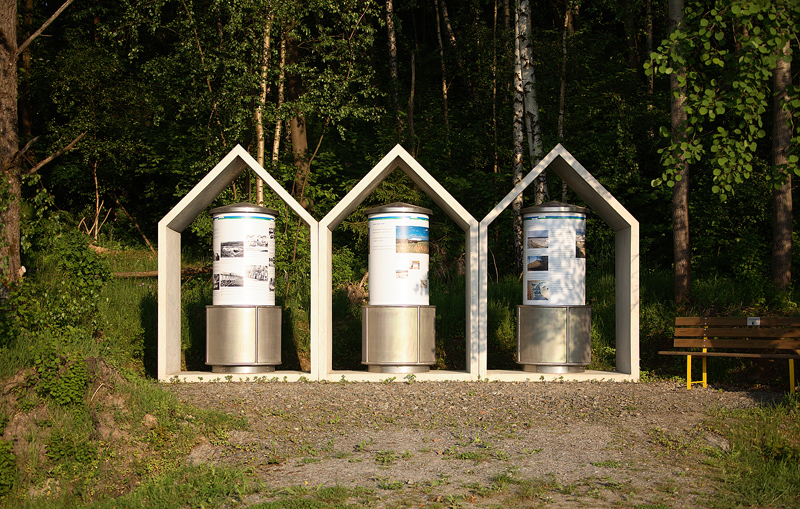
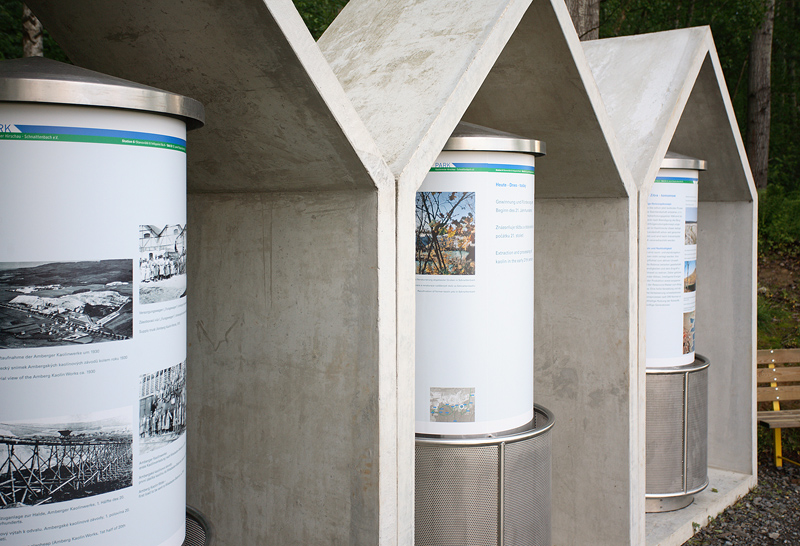
Yesterday
Technically primitive mining processes in the early 20th century

A map dating from 1769 showing the old highway to Nuremberg with the villages of Hirschau and Schnaittenbach. The present-day mining site was then agricultural land. (StAA, Plansammlung 17/3)
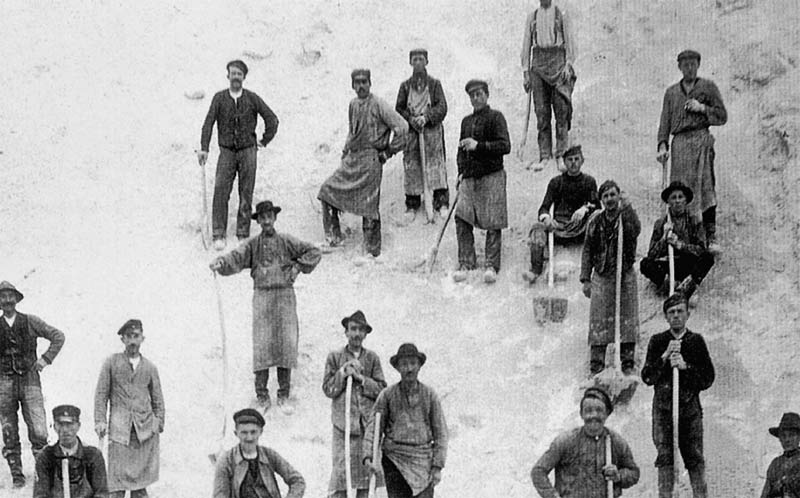
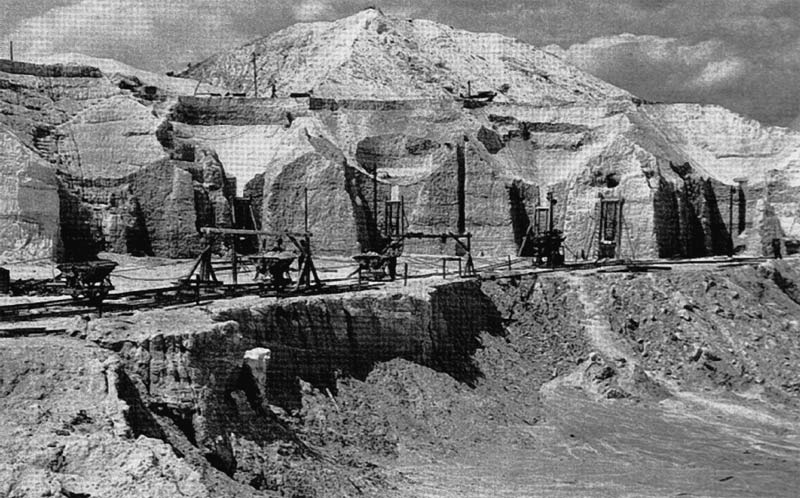
Mining kaolin by hand (Amberg Kaolin Works, early 20th century) (left) & Mining kaolin with pneumatic hammers. The unrefined soil was brought to the surface in mine trucks (Amberg Kaolin Works, early 20th century)
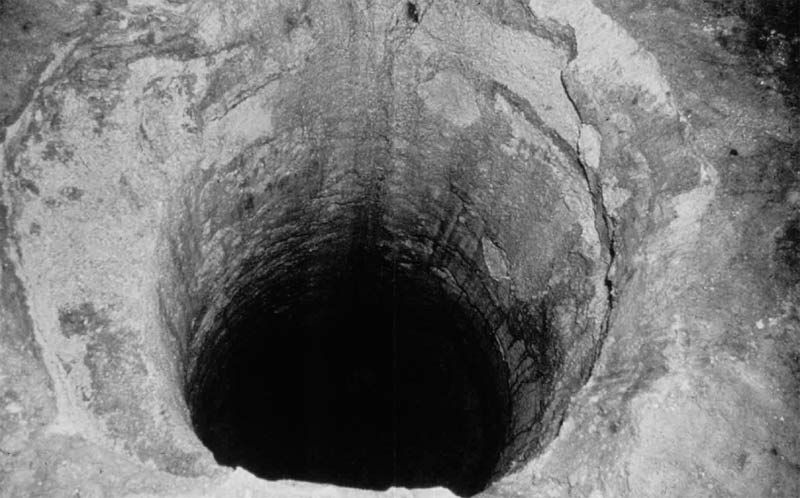
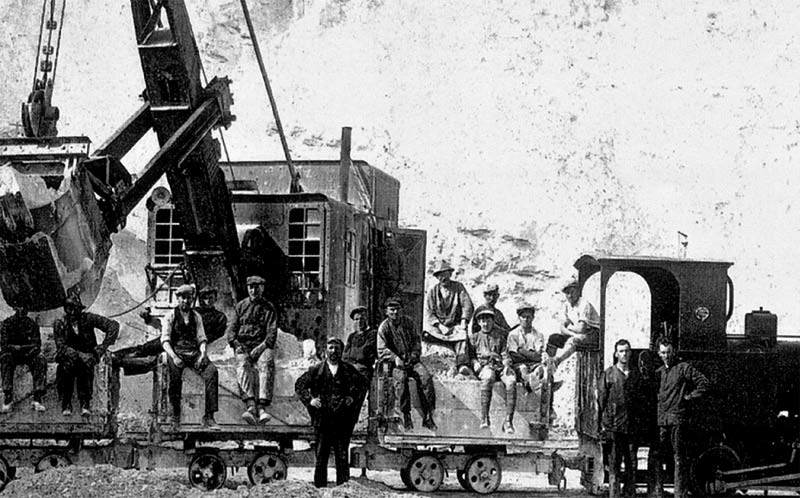
Shafts about 10m in diameter led to the underground kaolin mines. (Kick Mines, before 1883) (LEFT) & An excavator made by the Tatz company; two men had to stand beside it to work it. The excavated soil was taken away by steam locomotives on rails. (Amberg Kaolin Works, 1921)
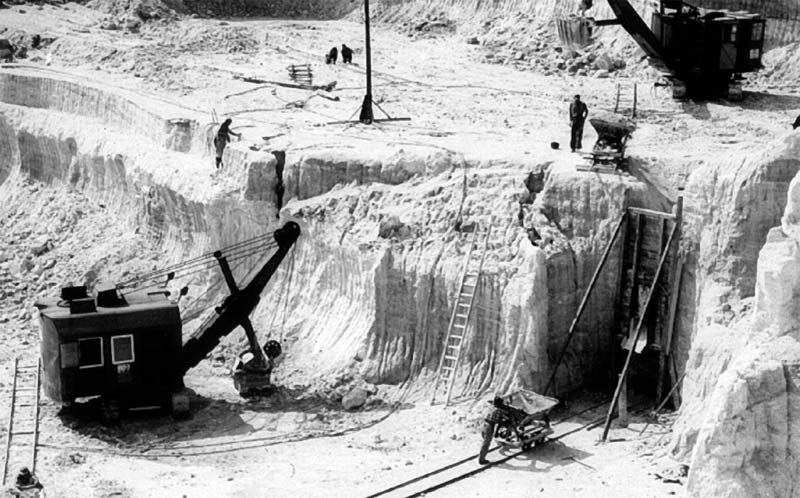
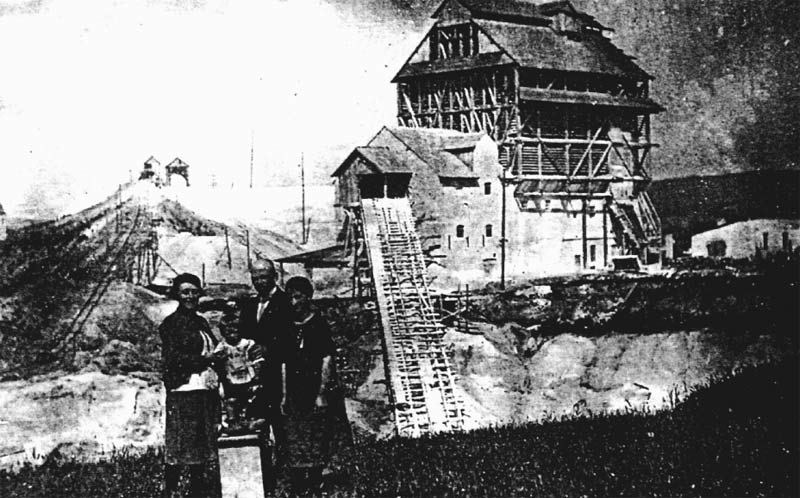
Mining with excavators as well as „Schlitzschurrenabbau“.
(Amberg Kaolin Works, early 20th century) (LEFT) & Refining of sand in Ostfeld 1 (Amberg Kaolin Works, 1928)
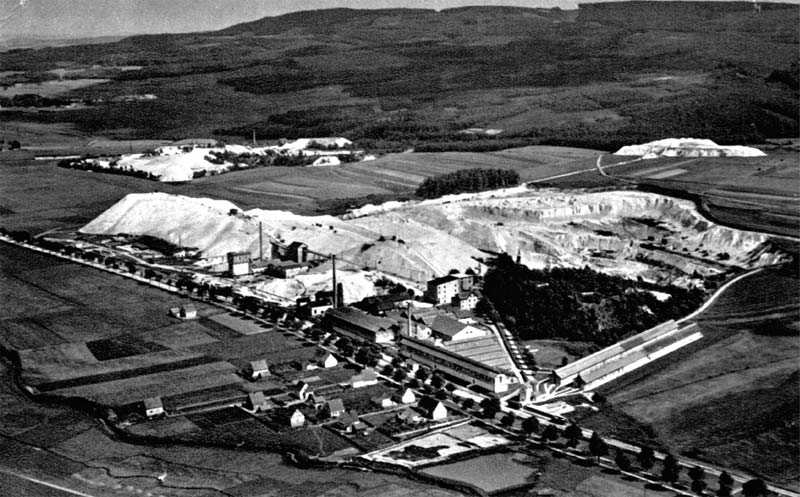
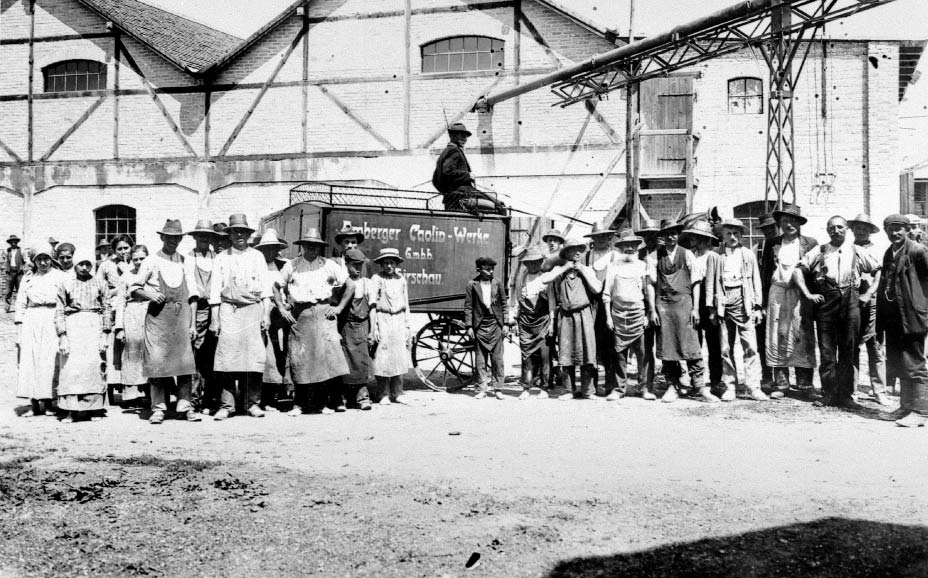
Aerial view of the Amberg Kaolin Works ca. 1930 (LEFT) & Supply truck (Amberg Kaolin Works, 1910)
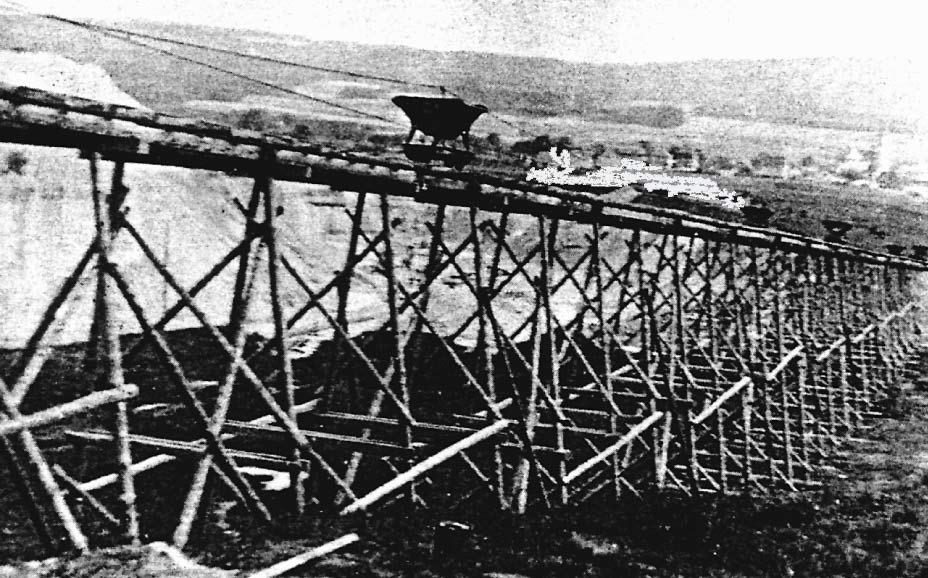
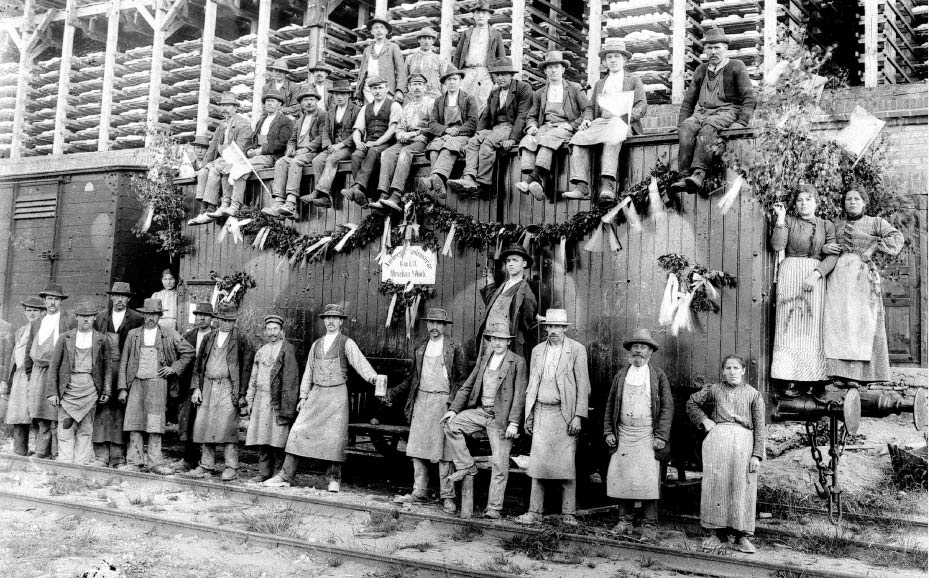
Cable winch on a slagheap (Amberg Kaolin Works, 1st half of 20th century) (LEFT) & Amberg Kaolin Woks – first load to be sent to Wiesbaden-Biebrich, ca. 1910
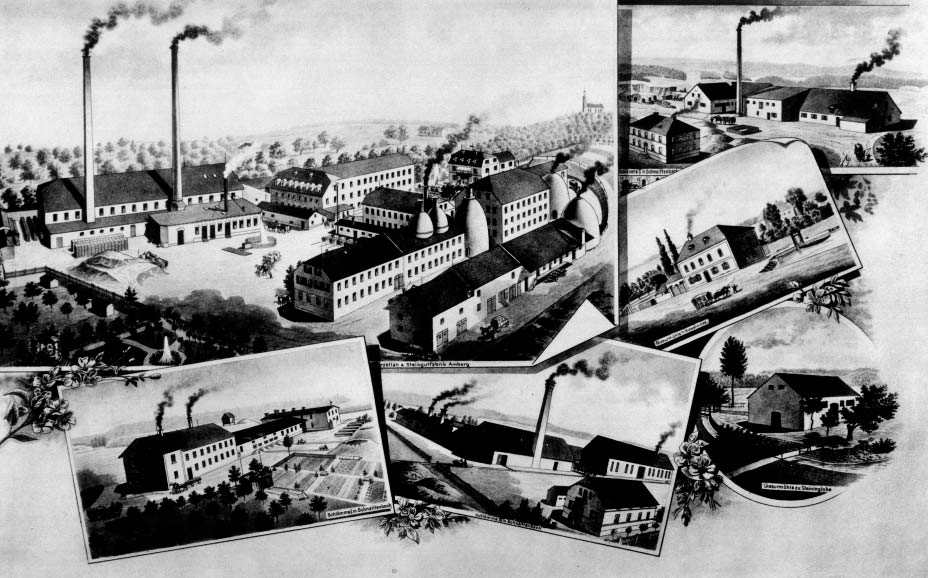
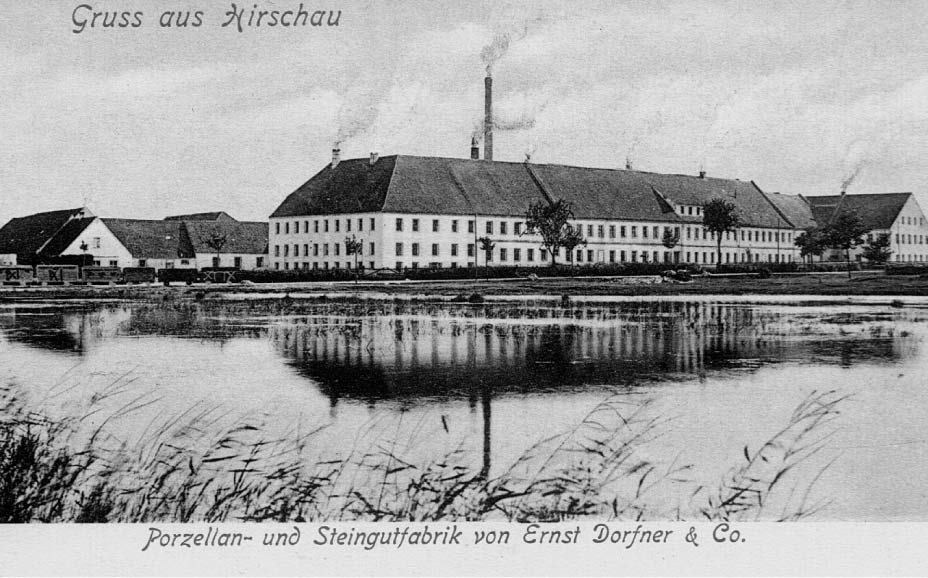
China and stoneware factory in Amberg, clay elutriation works in Schnaittenbach, and glaze works in Haselmühl and Steininglohe belonging to Eduard Kick, ca 1890 (LEFT) & China and stoneware factory belonging to Ernst Dorfner & Co in Hirschau, 1900
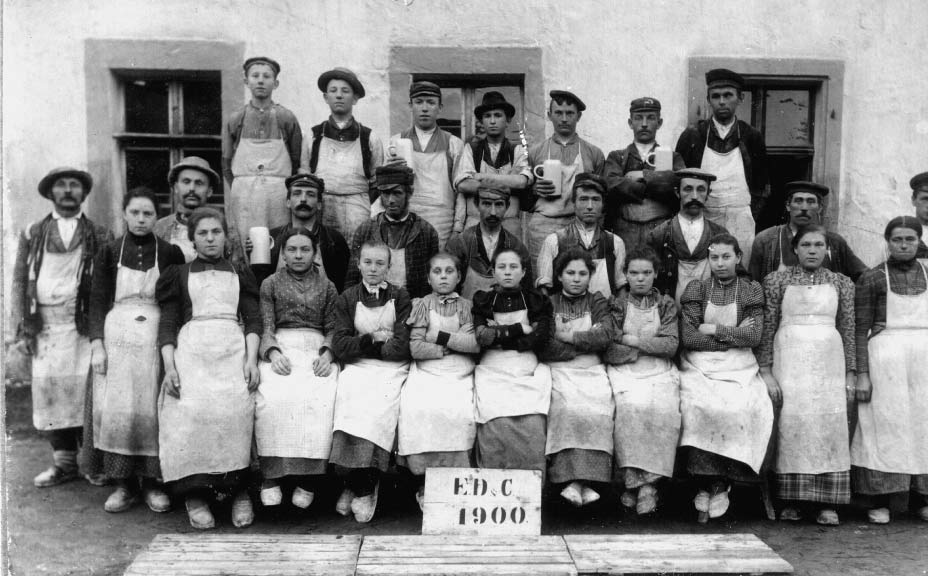
Employees of the stoneware and china factory owned by Ernst Dorfner & Co, ca. 1900
Today
Extraction and processing of kaolin in the early 21th century
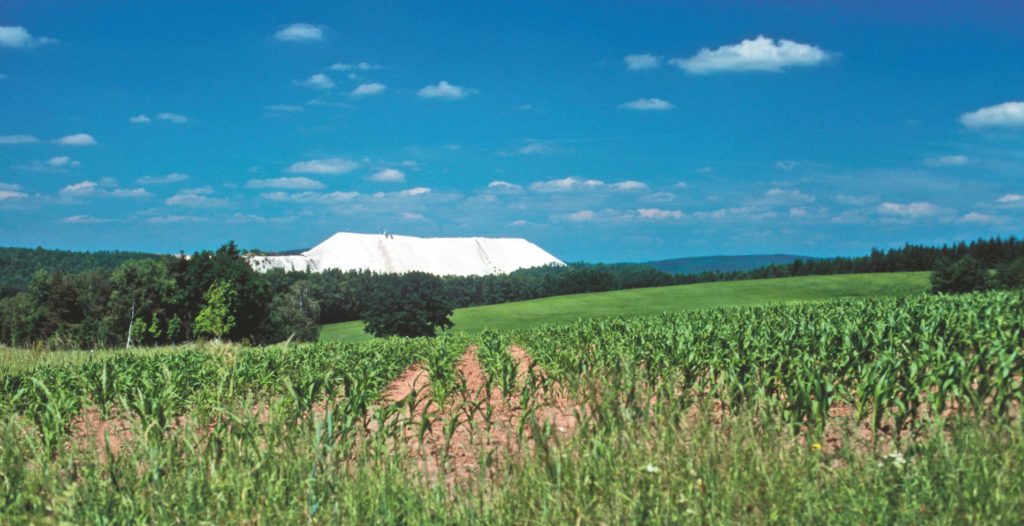
Monte Kaolino’, the quartz slag heap that has become the symbol of the kaolin mines


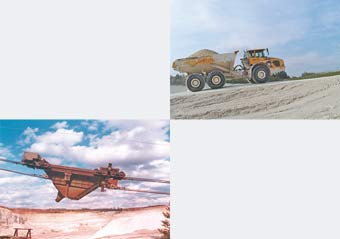
Hydraulic excavators, bucket-wheel excavators and wheel loaders are used in the excavation process. The unrefined soil is transported to the refinery or to the slagheaps by means of dumper trucks, conveyor belts or winches.

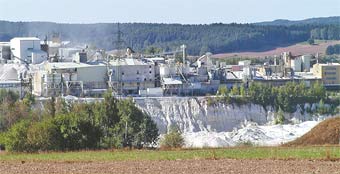
The unrefined soil is transported to the kaolin works on conveyor belts (LEFT) The mine owned by the Dorfner company in Hirschau
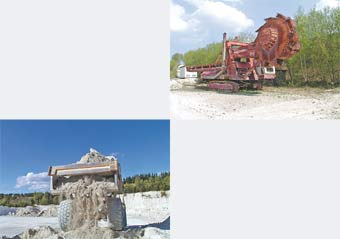
An SH250 bucket-wheel excavator constructed by Orenstein & Koppel; now no longer in service, it will be on display at the mine in Schnaittenbach which is to be opened to the public
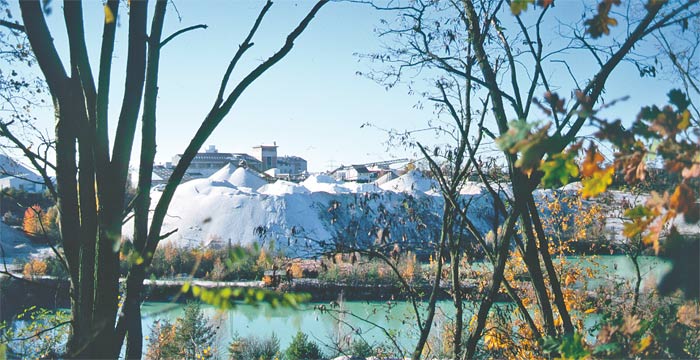
Tomorrow
Plans for the subsequent use of the site
The procedures already initiated will culminate in the creation of several artificial lakes, i.e. a large recreation area. Whereas in most instances, plans for re-using an industrial site are implemented only after mining has ceased, the gradual changes in the landscape have been in progress for some time at the kaolin mines. The Industrial Trail is designed to illustrate this model approach.

